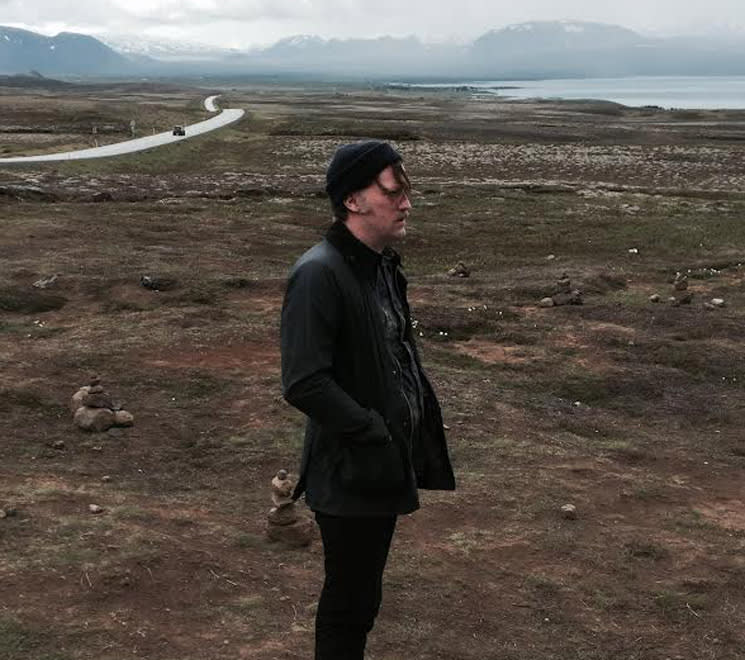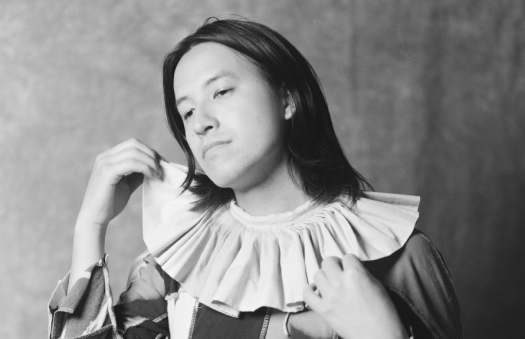Though it turned out to be some of his best work, Axel Willner reportedly struggled in the early stages of creating 2013's Cupid's Head, his fourth album as the Field and the first since his debut to be made without help from collaborators. For The Follower, Willner's latest work (out now on Kompakt) the process seems to have been easier.
"I've found a good way to work by myself again, which is really nice," Willner tells Exclaim! "Like with Cupid's Head and From Here We Go Sublime, I haven't had any guest musicians, even though I do miss having people to jam with."
The Follower charts other progressions in Willner's work as well; the tracks are organized in the order he wrote them, and as the album proceeds, we hear him eschewing the club-ready sound of early tracks in favour of a new, more serene brand of ambient techno. "The album, for me, is divided in two. The first part is much more upbeat, a bit more banging, and the second part is more ambient."
That second half also finds Willner embracing modular synthesizers for the first time. "For every new album, gear is one of the most influential things to get me started," he says. "It's really good for your creativity to play with new things. This time it was the modular system. The first tracks are from before integrating the system, and in the end, it's more [of] the modular system, with everything else in the background."
The sonic elements Willner coaxes from his new synths are profoundly affective. The Field's music has always been pretty, right from the very first loops on his defining record, 2007's indie-techno landmark From Here We Go Sublime. But on new tracks like "Soft Streams" and "Raise the Dead," he crafts subtle melodic sequences that are not just pretty but beautiful.
The later tracks especially capture a sense of melancholy, which is not surprising given Willner's influences on The Follower. "I was exploring a lot of older utopia; looking for a utopian way of living, which is quite impossible in this age. But I was looking back to people that tried and failed. It's a very dreamy type of album, of what could have been and what is right now. So it's a bit of an escape. That may be why it seems dreamy and comforting."
The Follower is also Willner's most rhythmically complex album to date, and requires close attention (and a lot of counting) to unravel its loops, many of which do not cycle in the same four beats as the bass drum.
That rhythmic experimentation started on Cupid's Head, Willner says, but he wanted to take it further on The Follower.
"A modular system is the best thing to experiment with rhythms; there are so many tools to use. It's easier, more hands-on than programming a drum machine. It's still quite subtle, though. The 4/4 is still pounding away, but if you listen more closely to it, you hear a lot of things going on top of each other, stumbling and so on."
Subtlety and careful listening are something of a theme on this album; sometimes developments are slight, and slow to arrive. Willner has always used repetition in his work, but on The Follower he says he "pushed the idea really far" — something he acknowledges might alienate some listeners.
"I can sit and listen to a drone that doesn't change whatsoever for 50 minutes and love it," he says. "But for my mother, for example, or for radio listeners who aren't used to listening to music that changes slowly, it might be hard to get into. But it's like a lot of good things — if you give it time and patience then maybe it opens up for you."
But one thing you won't get from The Follower, no matter how long you listen. "If anyone is waiting for the drop they're going to wait forever." Willner says. "It's not that type of music."
Check out The Follower track "Raise the Dead," recorded live in Berlin, below.
"I've found a good way to work by myself again, which is really nice," Willner tells Exclaim! "Like with Cupid's Head and From Here We Go Sublime, I haven't had any guest musicians, even though I do miss having people to jam with."
The Follower charts other progressions in Willner's work as well; the tracks are organized in the order he wrote them, and as the album proceeds, we hear him eschewing the club-ready sound of early tracks in favour of a new, more serene brand of ambient techno. "The album, for me, is divided in two. The first part is much more upbeat, a bit more banging, and the second part is more ambient."
That second half also finds Willner embracing modular synthesizers for the first time. "For every new album, gear is one of the most influential things to get me started," he says. "It's really good for your creativity to play with new things. This time it was the modular system. The first tracks are from before integrating the system, and in the end, it's more [of] the modular system, with everything else in the background."
The sonic elements Willner coaxes from his new synths are profoundly affective. The Field's music has always been pretty, right from the very first loops on his defining record, 2007's indie-techno landmark From Here We Go Sublime. But on new tracks like "Soft Streams" and "Raise the Dead," he crafts subtle melodic sequences that are not just pretty but beautiful.
The later tracks especially capture a sense of melancholy, which is not surprising given Willner's influences on The Follower. "I was exploring a lot of older utopia; looking for a utopian way of living, which is quite impossible in this age. But I was looking back to people that tried and failed. It's a very dreamy type of album, of what could have been and what is right now. So it's a bit of an escape. That may be why it seems dreamy and comforting."
The Follower is also Willner's most rhythmically complex album to date, and requires close attention (and a lot of counting) to unravel its loops, many of which do not cycle in the same four beats as the bass drum.
That rhythmic experimentation started on Cupid's Head, Willner says, but he wanted to take it further on The Follower.
"A modular system is the best thing to experiment with rhythms; there are so many tools to use. It's easier, more hands-on than programming a drum machine. It's still quite subtle, though. The 4/4 is still pounding away, but if you listen more closely to it, you hear a lot of things going on top of each other, stumbling and so on."
Subtlety and careful listening are something of a theme on this album; sometimes developments are slight, and slow to arrive. Willner has always used repetition in his work, but on The Follower he says he "pushed the idea really far" — something he acknowledges might alienate some listeners.
"I can sit and listen to a drone that doesn't change whatsoever for 50 minutes and love it," he says. "But for my mother, for example, or for radio listeners who aren't used to listening to music that changes slowly, it might be hard to get into. But it's like a lot of good things — if you give it time and patience then maybe it opens up for you."
But one thing you won't get from The Follower, no matter how long you listen. "If anyone is waiting for the drop they're going to wait forever." Willner says. "It's not that type of music."
Check out The Follower track "Raise the Dead," recorded live in Berlin, below.




